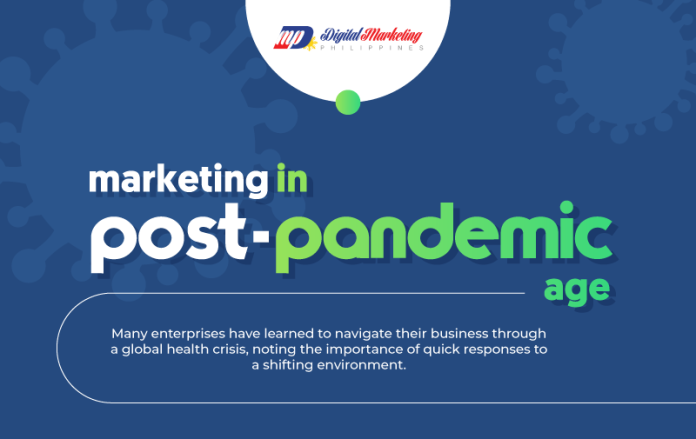The COVID-19 catastrophe has reaffirmed what we already know; businesses must communicate in very localized and exact language, addressing particular customers based on their situations and interests. That requires a thorough awareness of the ground situation, nation by country and state by state. It may even imply adapting messaging by location for specific firms, such as banks, restaurants, or shopping. Apart from location, we have learned that marketing communications must be personally relevant, linked with an individual’s position and beliefs, rather than demographic characteristics such as age and gender. Developing a genuine, human connection inside every commercial message demands segmenting consumers along various dimensions that determine their purchase behavior, from psychographics to attitude traits. More significant insights may be gained by incorporating consumer segmentation and personalities into media strategy and creative marketing tactics. Even better, these insights may be used to inform the whole client experience.
COVID-19 has made it more difficult to recruit new customers, especially those who network at trade shows and displays and for smaller businesses. As a result, enterprises must take a hard look at their digital strategy, which should include having social media outsourcing companies, outsourcing SEO agencies, and content marketing. Moreover, consumer expectations have already been increasing prior to COVID-19. Gen Z grew raised with technology inextricably linked to their daily lives. Due to their prowess with our data, direct-to-consumer firms have already trained us to anticipate a certain amount of hyper-personalization. However, when the pandemic struck, the pace of digital transition quickened dramatically; this increased customer expectations for what businesses might accomplish for them via a more digital experience.
If the bar continues to rise, we must strive to new customer experience ideals in the B2C and B2B contexts. Consumers now want seamless, anticipatory, relevant, and linked experiences. In other words, they are solely concerned with obtaining what they want when they desire it and certain that nothing will stand in their way; the businesses must prioritize data and technology to create these experiences. This will very certainly need the incorporation of some machine learning and or artificial intelligence. Currently, the majority of the content, commerce, community, and convenience are delivered in a “one-size-fits-all” manner. Still, as consumers demand greater personalization, businesses will need to leverage more data and intelligence to improve their decision-making and drive greater relevance in their customer interactions in order to foster stronger human connections with their brands.
For a long time, marketing was essentially about purchasing broad or focused reach in the media at the best prices and hoping for conversion. In marketing terminology, we have witnessed a change away from brand marketing to expand reach toward performance marketing to generate leads. The acceleration of digital channels as a result of the pandemic increased that tendency. While performance marketing has a significant role in the mix, successful CMOs realize that the most considerable outcomes come from a delicate balance of brand and performance marketing. They must battle hard against a predisposition toward what is most readily quantifiable. Many organizations are putting their customer relationship management (CRM) teams closer than ever to their media teams to understand the whole continuum better and maximize efficiency. CRM is primarily fueled by first-party data, or customer information that a business possesses, with the consumer’s agreement and is the driving force behind promotions, personalization, and e-mail marketing.
However, that same first-party data may aid in increasing media efficiency, especially digital media and other addressable forms that enable businesses to target individuals. With the value of third-party data decreasing as key browsers implement rule changes, marketers are becoming significantly more adept at engineering the online “dates” they want to go on. They are figuring out new ways to harness the power of their data and developing new strategies for partnering with publishers. Even as targeting techniques evolve in response to the changing rules of the game, it will be critical for businesses to maintain a balance of brand and performance marketing since bottom-funnel methods drive top-funnel objectives and vice versa.
We must keep in mind that marketing is often just the start of a connection with the consumer. For instance, in a B2C scenario, we engage them, convert them directly or indirectly to a sale, and then ideally keep them as advocates and perhaps receptive to upsells and cross-sells. Marketing must be regarded holistically and, when feasible, strive to connect the links. It is implausible to suppose that all customer-facing operations can or should report to the exact location. The general idea is that rearrangement resolves all issues. It is crucial to critically examine the operating model and assess the processes, technology, personnel, data models, and KPIs to identify the best approaches to align with customer demands and then drive change appropriately.
It is critical to establish trusting connections with clients. Advertising, for example, demonstrates a brand promise, which is subsequently fulfilled by the product, service, and customer experience. However, COVID-19 has renewed its focus on relationships, especially business-to-business (B2B) sales. When confronted with a virtual sales environment, teams with established ties have maintained revenue momentum by relying on the strength of their earlier alliances. By contrast, prospecting for new clients has necessitated the development of a unique set of skills centered on selling solutions rather than items.
In both instances, trust and honesty are critical components of market momentum. This has necessitated a significant recasting of talent for sales and marketing leaders in B2B organizations in order to identify individuals best suited to driving relationships in this new world of online interactions, a world that relies less on the charm and more on insights and solutions. Trust is earned and rewarded by people who listen to client requirements and then design solutions that address those needs.
Trust is equally critical in a B2C scenario. It is vital to the value exchange between a business and its customers. As businesses increasingly rely on personal data obtained with consumers’ consent, they must not only adhere to consumer privacy regulations and ensure data security; but also have the opportunity to increase customer loyalty and differentiation by designing more transparent privacy control interfaces. Consumers can make more informed decisions if they understand what they are consenting to share with businesses, and more transparency fosters greater trust.
Without a doubt, there was a period when marketing was seen as a cost center inside businesses, with the primary responsibility being to optimize return on investment. It was one of the first to be reduced during difficult times when topline performance was impacted. Without an awareness of the marketplace’s zeitgeist, the C-suite will be unable to adapt to current risks and opportunities and effectively navigate the future in both good and bad times. Moreover, COVID-19 has fostered a collaborative leadership culture centered on the pressing need for resilience. Marketing now has the chance to play a vital part in that discourse on a continuous basis, therefore driving the organization’s larger development and innovation agenda.
To know more, below is an infographic from Digital Marketing Philippines that discusses marketing in the post-pandemic age.




















